Lectures 2023-24
Programme Secretary Bryan Temple:
If you want to view the programme for the whole year, just click on Programme 2023-24
12th September at 10.30 am
Alexander Nasmyth 1758- 1840: Painter and Polymath
by
Patricia Andrew
Nasmyth was one of Edinburgh’s most versatile artists, 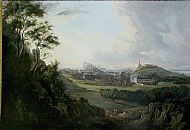 whose work exemplifies the enquiring spirit of his age. The lecture charts his life and work, taking a fresh look at his paintings and his wider achievements. the Firth of Forth. Also discussed are his friendships (notably with Robert Burns), his political views and their consequences, his many students and pupils, and the artistic and scientific careers of his numerous children.
whose work exemplifies the enquiring spirit of his age. The lecture charts his life and work, taking a fresh look at his paintings and his wider achievements. the Firth of Forth. Also discussed are his friendships (notably with Robert Burns), his political views and their consequences, his many students and pupils, and the artistic and scientific careers of his numerous children.
10th October at 10.30 am
The Romans who shaped Briton
by
Sam Moorhead
It is ten years since Sam Moorhead and David Stuttard published The 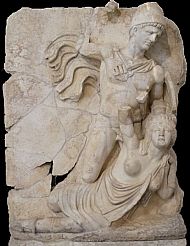 Romans who Shaped Britain (Thames and Hudson). There was criticism at the time that it focussed too much on powerful rulers; it was still the vogue then to view historical changes as being driven by long-term socio-economic factors. However, the last few years have shown us how powerful individuals can have an enormous impact on changing the narrative and course of history. Drawing on famous archaeological sites and objects, this talk will show the great influence that numerous Roman leaders had on the history of Roman Britain.
Romans who Shaped Britain (Thames and Hudson). There was criticism at the time that it focussed too much on powerful rulers; it was still the vogue then to view historical changes as being driven by long-term socio-economic factors. However, the last few years have shown us how powerful individuals can have an enormous impact on changing the narrative and course of history. Drawing on famous archaeological sites and objects, this talk will show the great influence that numerous Roman leaders had on the history of Roman Britain.
Image caption: Claudius smiting Britannia, from Aphrodisias (Turkey).
14th November at 10.30 am
The cities of the Hanseatic League
by
Simon Rees
Beginning in Lübeck and Hamburg in the 13th century, the Hanseatic 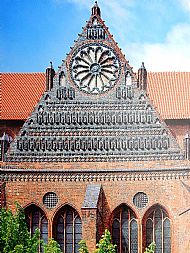 League eventually linked some 60 European cities in a series of trade agreements that transcended national bounds. Riga, Tallinn, Stockholm, Bruges, London, King’s Lynn, Nuremberg, Bremen, Danzig, Stettin and Konigsberg were all connected by an intricate series of contracts, defended by armed forces and a powerful navy, and vital to the economic prosperity of each city. The Brick Gothic style of architecture developed during this period, and many important churches, town halls, guildhalls, warehouses and offices were built in this style, many of which survive to this day. Understanding the importance of the Hanseatic League is essential to a knowledge of European mercantile history from the 13th to the 17th century, and to an appreciation of the art and architecture inspired by – and paid for by – this vital transnational association.
League eventually linked some 60 European cities in a series of trade agreements that transcended national bounds. Riga, Tallinn, Stockholm, Bruges, London, King’s Lynn, Nuremberg, Bremen, Danzig, Stettin and Konigsberg were all connected by an intricate series of contracts, defended by armed forces and a powerful navy, and vital to the economic prosperity of each city. The Brick Gothic style of architecture developed during this period, and many important churches, town halls, guildhalls, warehouses and offices were built in this style, many of which survive to this day. Understanding the importance of the Hanseatic League is essential to a knowledge of European mercantile history from the 13th to the 17th century, and to an appreciation of the art and architecture inspired by – and paid for by – this vital transnational association.
12th December at 10.30 am
The Men who made Menswear
by
Russell Nash
The Men who Made Menswear tells the story of men’s tailoring over the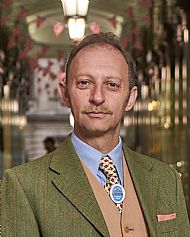 past 200 years. Told through the lives of the men who commissioned and created and wore it.
past 200 years. Told through the lives of the men who commissioned and created and wore it.
Tailors, shirtmaker, hatters and other craftspeople in London’s west end, especially around Saville Row & Jermyn Street have shaped the way men dress since the Regency. How did men such as Beau Brummell, The Duke of Windsor, Tommy Nutter, Montague Burton, Alexander McQueen and John Stephen create their signature looks which influenced mens fashion? This lecture also looks at the wider cultural shifts since the early 19thC and how they have affected the way that men present themselves.
16th January at 10.30 am
The Art of Winnie the Poo
by
James Campbell
Investigating the process of creating, through the collaboration between A A Milne and E H Shepard, the iconic images for one of the leading worldwide children's all-time favourite books. This was the first time that author and illustrator worked together feeding off each other’s creative input and reaction to words and pictures – with never previously published drafts and drawings of Winnie-the-Pooh and friends in the Hundred Acre Wood. As we enter the Centenary of these much-loved books of childhood (2024-2028) this lecture will transport you back and take you behind the scenes as we step through the creative inspiration which has linked Milne and Shepherd together in perpetuity.
A A Milne and E H Shepard, the iconic images for one of the leading worldwide children's all-time favourite books. This was the first time that author and illustrator worked together feeding off each other’s creative input and reaction to words and pictures – with never previously published drafts and drawings of Winnie-the-Pooh and friends in the Hundred Acre Wood. As we enter the Centenary of these much-loved books of childhood (2024-2028) this lecture will transport you back and take you behind the scenes as we step through the creative inspiration which has linked Milne and Shepherd together in perpetuity.
13th February at 10.30 am
Botticelli's Florence
by
Dr Paula Nuttall
Botticelli is one of the best-loved artists of the Florentine 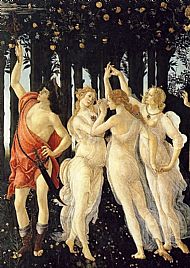 renaissance. This lecture looks at his career and at the city that shaped his art, putting his paintings in their historical context, and showing how they reflect Botticelli’s world. From The Birth of Venus and Primavera, painted during the golden age of the Medici, to the Mystic Nativity, redolent of the religious fervour of Savonarola, who dominated Florence after the expulsion of the Medici in 1494, Botticelli’s paintings are not only stunning works of art, but visual testimony to one of the most eventful periods in Florentine history.
renaissance. This lecture looks at his career and at the city that shaped his art, putting his paintings in their historical context, and showing how they reflect Botticelli’s world. From The Birth of Venus and Primavera, painted during the golden age of the Medici, to the Mystic Nativity, redolent of the religious fervour of Savonarola, who dominated Florence after the expulsion of the Medici in 1494, Botticelli’s paintings are not only stunning works of art, but visual testimony to one of the most eventful periods in Florentine history.
12th March at 10.30 am
A Potted History of Briton
by
Julian Richards
Ceramics are part of everyday life, but the flawless products of modern 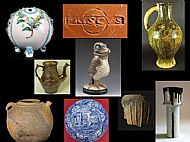 industry are just the final development of a process that started in Britain over 6000 years ago. In this talk Julian examines Britain’s potted history, starting with the simple products of the early Neolithic, before charting changes in technology, taste and society, discoveries and failures . Through industry and 'art pottery' to the potters of today, still taking clay and fashioning objects of function and beauty, this is an extraordinary story, with some beautiful pots and inspiring potters.
industry are just the final development of a process that started in Britain over 6000 years ago. In this talk Julian examines Britain’s potted history, starting with the simple products of the early Neolithic, before charting changes in technology, taste and society, discoveries and failures . Through industry and 'art pottery' to the potters of today, still taking clay and fashioning objects of function and beauty, this is an extraordinary story, with some beautiful pots and inspiring potters.
9th April at 10.30 am
Gold in Japanese Art:Sacred and Profound
by
Meri Arichi
The reputation of Japan as a country fabulously rich in silver and gold  reached the west in the 14th century through the writings of the Venetian merchant and explorer, Marco Polo. Gold was used generously to adorn Buddhist icons in Japan from the sixth century when Buddhism was introduced from Korea, and for centuries gold was considered as the most appropriate precious material for decorating Buddhist halls and statues. The perception of gold as a sacred material underwent a radical change in the sixteenth century when newly powerful warrior rulers began to decorate their castles with magnificent screens and wall paintings on gold-leaf. This lecture examines the significance of gold in Japanese Art as the symbol of the sacred on one hand and the symbol of wealth and power on the other.
reached the west in the 14th century through the writings of the Venetian merchant and explorer, Marco Polo. Gold was used generously to adorn Buddhist icons in Japan from the sixth century when Buddhism was introduced from Korea, and for centuries gold was considered as the most appropriate precious material for decorating Buddhist halls and statues. The perception of gold as a sacred material underwent a radical change in the sixteenth century when newly powerful warrior rulers began to decorate their castles with magnificent screens and wall paintings on gold-leaf. This lecture examines the significance of gold in Japanese Art as the symbol of the sacred on one hand and the symbol of wealth and power on the other.
14th May at 10.30 am
The Cult of Gloriana: Art Music and personaity at the Court of the Virgin Queen
by
Mark Cottle
Elizabeth I was the most remarkable woman of a remarkable age. Her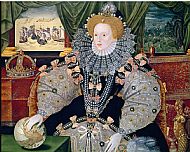 reign was one of the great creative periods of English history – literature, music, art, architecture and overseas exploration all reached unprecedented heights. With passing reference to literature and architecture, this lecture will focus chiefly on the portraits, miniatures and music of Elizabeth’s court. The aim is to demonstrate great levels of artistic achievement and to recreate something of the energy, spirit, and confidence of this Golden Age.
reign was one of the great creative periods of English history – literature, music, art, architecture and overseas exploration all reached unprecedented heights. With passing reference to literature and architecture, this lecture will focus chiefly on the portraits, miniatures and music of Elizabeth’s court. The aim is to demonstrate great levels of artistic achievement and to recreate something of the energy, spirit, and confidence of this Golden Age.
11th June at 10.30 am
From Encautic to Acrylic-How Paint made Art
by
Lynne Gibson
Paint is composed of the coloured pigment and the sticky medium. 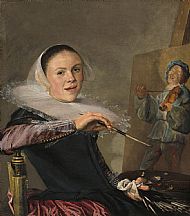 The medium binds the pigment particles together and the paint to the support. One of its best attributes is its invisibility – which means it is often is overlooked! However, the media of paint have been vital to artistic developments across the centuries.
The medium binds the pigment particles together and the paint to the support. One of its best attributes is its invisibility – which means it is often is overlooked! However, the media of paint have been vital to artistic developments across the centuries.
Buon fresco allowed artists to decorate the vast new Christian basilicas,  Renaissance palaces and civic halls. Tough egg tempera was ideal for altar panels. Rich gouache was the perfect paint for illuminations on vellum and paper.
Renaissance palaces and civic halls. Tough egg tempera was ideal for altar panels. Rich gouache was the perfect paint for illuminations on vellum and paper.
Without oils the Mona Lisa would not be mysterious, without modern manufacturing processes Impressionism would never have existed, and Jackson Pollock could not have ‘splashed and dripped’ without industrial car paints.
By examining some key works from Western Art history we will discover the important role materials and their techniques play in our understanding and enjoyment of Art.

